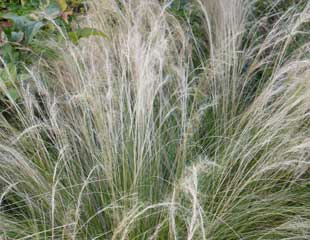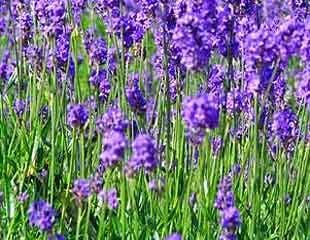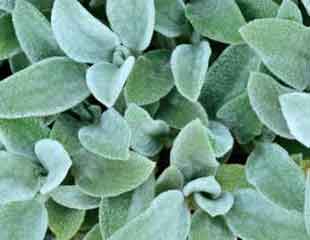


How to Create a Sensory Garden
To create a sensory garden, the planting needs to appeal to our senses through touch, small, sight and even sound.
A sensory garden can have special importance for gardeners, friends and family with impaired senses. We can also design it as a calming garden to help ameliorate stess and anxiety.
To ensure accessibility to touch and smell the plants in a sensory garden, raised beds are ideal surrounded by hard landscaping of a generous width, providing easy access, ensuring visitors and gardeners alike can reach, touch and enjoyed garden. In a sensory garden, the choice of plants and flowers is centred on plants which are good to enjoy by touch and smell.
Since touch is important in a sensory garden, check out that none of the plants or shrubs is toxic, as many can cause skin irritation. The RHS has a comprehensive list.
What to plant in a sensory garden
Ideas of what to plant in a sensory garden:
- The image right above shows a great plant for a sensory garden, Stachys byzantina 'Big Ears' which has lovely downy leaves which are irresistibly soft to touch, and it will trail downwards if planted in a raised bed. Stachys only produce a single, soft flower spike with pale lavender flowers (which are very attractive to bees) but the leaves are soft and downy.
- Grasses make a great addition in a sensory garden because they create movement and will sway, dance and drift around on a breeze. In addition, many grasses have fluffy plumes which are tactile to touch, illustrated on the grasses pages.
- Scent is one of the most important factors in a sensory garden. Plants such as Lavender and rosemary are aromatic to the touch and produce scent if planted where visitors will brush along the plant releasing the scent.
- There are several pelargoniums (also known as geraniums) which have strongly scented leaves when stroked or picked such as 'Aroma', crispum 'Variegatum', (lemon scented leaves) 'Fragrans', (pine scented) 'Graveolens' of gardens, (sweet scented) 'Old Spice' (spicy scented) 'Prince of Orange', (orange scented) Sweet Mimosa, and many more. These are available from specialist growers, but they are not hardy and must be overwintered under glass in a frost free environment. Pelargoniums will survive well in a conservatory tolerating the extremes of heat and produce colour and scent as part of an indoor garden. In a raised bed, they are colourful and the leaves will release a variety of scents when touched.
- The image above left shows Stipa tenuissima with its soft fluffy plumes which just asks to be stroked. Grasses are tactile, some are soft and fluffy, others with plumes ideal for touch, which make them ideal a good addition in a sensory garden. Grasses move on the breeze and can move like waves. At Trentham Gardens in Staffordshire they have a river of grasses, where the grasses are planted on mass almost like a green river.
- Suitable grasses are Stipa gigantea, and S. tennuissima, Deschampsia, Calamagrotis and the annual grass Briza maxima. There are more ideas and images on the Grasses page and on Pinterest Wonderful Grasses to see the various types, which really are great to the touch, and move with the breeze. If grasses alone appear too plain planted on their own, they also look good planted with Allium, Achillea, Crocosmia and the tall grasses look good with Thalictrum.
- Scented plants are an essential part of a sensory garden. Below plants which flower and produce scent at different times of the year, suitable for planting in a sensory garden. There are, of course, many roses to choose from and the expert growers can always advise on roses, in addition, there are many plants with strong scent other than roses, which are easier to grow. The plants listed below are hardy.
- If space is limited, the same area of a garden can be used to create an area which is sensory, contains scented plants and includes many plants which are attractive to bees and butterflies. Many of the plants in the lists appear in all three categories.
Planting ideas for a Sensory Garden
Winter scent
Mahonia japonica and x media ' Charity'
Hamamelis x intermedia 'Jelena'
Winter flowering Honeysuckle, Lonicera fragrantissim
Sarcococca common name Sweet box.
Late summer autumn scent
Lonicera (honey suckle)
Sedum (for bees and butterflies)
Artemisia
Scented Clematis C. terniflora "Sweet Autumn"
Another good addition to a sensory garden is to plant to encourage bees, butterflies and birds to bring the garden alive. Many of the scented plants above are attractive to bees and butterflies. Suggestions for wildlife friendly plants, plants for bees and plants for butterflies.
Last updated 23.12.2022
